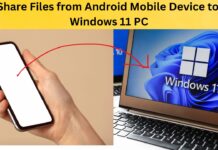Introduction to DolphinGemma: A Breakthrough in Cetacean Research
In the ever-evolving landscape of scientific discovery, collaboration remains a cornerstone for innovation and progress. In line with this philosophy, a significant development is set to unfold this summer with the introduction of DolphinGemma, an open model designed to revolutionize the study of cetacean communication. This model, originally trained on the vocalizations of Atlantic spotted dolphins, is anticipated to offer valuable insights and applications for researchers focusing on other dolphin species, such as bottlenose and spinner dolphins. The adaptability of DolphinGemma, made possible by its open-source nature, permits fine-tuning for the diverse vocal patterns exhibited by different cetacean species.
The Power of Open-Source Collaboration
The decision to share DolphinGemma as an open model underscores the growing recognition of the power of open-source collaboration in scientific research. By making this model accessible to researchers worldwide, the creators aim to democratize the tools required for acoustic data analysis. This move is expected to accelerate the discovery of patterns within dolphin communication, thereby enriching our collective understanding of these intelligent marine mammals.
The open nature of DolphinGemma is particularly significant because it allows researchers to adapt and refine the model according to the specific vocal characteristics of the dolphin species they are studying. This flexibility is crucial because each dolphin species has unique vocalization patterns, and a one-size-fits-all approach would be inadequate. By providing a framework that can be customized, DolphinGemma empowers researchers to delve deeper into the intricacies of cetacean communication.
Advancing Dolphin Communication Studies
The endeavor to decode dolphin communication has been a long-standing journey, one that combines the efforts of dedicated field researchers, engineering experts, and cutting-edge technology. At the forefront of this initiative are the Wild Dolphin Project (WDP), the engineering prowess of Georgia Tech, and the technological capabilities of Google. Together, they are orchestrating a symphony of innovation that promises to bridge the communication gap between humans and dolphins.
Traditionally, dolphin communication studies have relied heavily on field observations, which, while invaluable, have limitations in terms of scale and scope. However, with the advent of models like DolphinGemma, researchers are no longer constrained by these limitations. Instead of merely listening to dolphin sounds, researchers can now begin to understand the patterns and meanings behind these sounds. This shift marks a significant milestone in the quest to comprehend dolphin communication, paving the way for a future where humans and dolphins might communicate more effectively.
Understanding Dolphin Vocalizations
Dolphins are known for their complex vocalizations, which they use for a variety of purposes, including social interactions, navigation, and hunting. These vocalizations comprise clicks, whistles, and burst pulses, each serving distinct functions. Clicks are primarily used for echolocation, allowing dolphins to navigate and hunt in murky waters. Whistles, on the other hand, are often used for communication among individuals, conveying information about identity, emotional state, and intentions.
The complexity of dolphin vocalizations has long fascinated researchers, prompting numerous studies aimed at deciphering their meanings. However, the sheer volume and variety of sounds produced by dolphins present significant challenges. This is where DolphinGemma comes into play, offering researchers a sophisticated tool to analyze and interpret these vocalizations with greater precision and efficiency.
Technological Synergy: WDP, Georgia Tech, and Google
The development of DolphinGemma is a testament to the power of technological synergy. The Wild Dolphin Project, with its extensive field research experience, provides invaluable insights into the behavioral and ecological aspects of dolphin communication. Georgia Tech contributes its engineering expertise, ensuring that the model is robust, efficient, and capable of handling large datasets. Meanwhile, Google’s technological resources offer the computational power necessary to train and refine the model.
This collaboration exemplifies how interdisciplinary partnerships can drive innovation and propel scientific research forward. By leveraging the strengths of each partner, the DolphinGemma project is poised to make significant contributions to the field of marine biology and beyond.
Potential Applications and Future Prospects
The potential applications of DolphinGemma extend far beyond the immediate study of dolphin communication. By providing a framework for analyzing complex vocalizations, the model could be adapted for use in studying other marine mammals, such as whales and porpoises. This adaptability underscores the model’s versatility and its potential to advance our understanding of marine ecosystems as a whole.
Moreover, the insights gained from studying dolphin communication could have broader implications for fields such as linguistics, cognitive science, and artificial intelligence. By exploring the parallels between human and dolphin communication, researchers may uncover new perspectives on the nature of language, cognition, and social interactions.
Conclusion: Bridging the Gap Between Humans and Dolphins
The release of DolphinGemma as an open model marks a significant step forward in the field of marine biology. By embracing the principles of open-source collaboration, the creators of DolphinGemma are empowering researchers worldwide to explore the rich tapestry of dolphin communication. This initiative not only accelerates the pace of discovery but also fosters a global community of researchers united by a shared goal: to deepen our understanding of these remarkable marine mammals.
As we stand on the brink of new discoveries, the prospect of bridging the communication gap between humans and dolphins becomes increasingly tangible. With the tools and technologies at our disposal, we are poised to unlock the secrets of dolphin communication, paving the way for a future where our interactions with these intelligent creatures are more meaningful and profound.
For more information about the Wild Dolphin Project and their ongoing research, please visit their official website at [Wild Dolphin Project](https://www.wilddolphinproject.org/).
For more Information, Refer to this article.

































